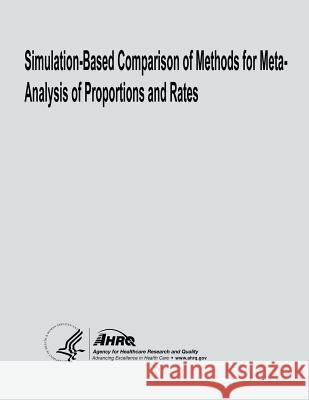Simulation-Based Comparison of Methods for Meta-Analysis of Proportions and Rates » książka
Simulation-Based Comparison of Methods for Meta-Analysis of Proportions and Rates
ISBN-13: 9781495306013 / Angielski / Miękka / 2014 / 102 str.
Simulation-Based Comparison of Methods for Meta-Analysis of Proportions and Rates
ISBN-13: 9781495306013 / Angielski / Miękka / 2014 / 102 str.
(netto: 87,32 VAT: 5%)
Najniższa cena z 30 dni: 85,73 zł
ok. 13-18 dni roboczych
Dostawa przed świętami

Darmowa dostawa!
Meta-analyses of proportions or rates (e.g., incidence rates) are very often included in reports generated by the Effective Health Care Program, and in systematic reviews in general. For example, one would use a meta-analysis of proportions to calculate the summary frequency of adverse or harmful events. Depending on the clinical context, adverse events can be rare (e.g., the incidence rate of rhabdomyolysis in statin treated patients is approximately 3.3 events per 100,000 patient years) or quite common (e.g., the average percentage of nausea and vomiting in chemotherapy-treated cancer patients was 48 percent in a meta-analysis of randomized trials). Meta-analysis of proportions can also be applied to evaluate medical test performance. Although a bivariate meta-analysis of sensitivity and specificity or summarization with a hierarchical summary operating characteristic curve is commonly recommended, separate (univariate) meta-analyses may be sufficient when there is little variation in either sensitivity or specificity. To help provide guidance for meta-analysts, we performed an extensive simulation study to assess the statistical properties of alternative approaches to meta-analysis of proportions and incidence rates.











